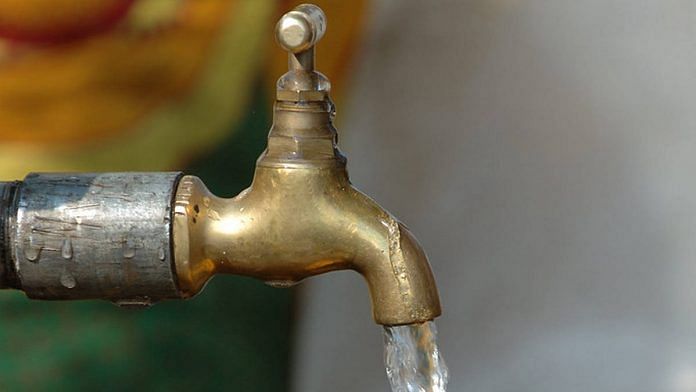New Delhi: West Bengal, Karnataka, Kerala, Assam, Jharkhand, Rajasthan and Uttar Pradesh are among the states that are lagging way behind their target to provide potable water connection to rural households under the Modi government’s flagship ‘Nal Se Jal’ programme, according to a mid-year review of the scheme by the Union Jal Shakti Ministry.
On the other end of the spectrum, Goa has become the first state to provide functional tap water connections to 100 per cent rural households, four year ahead of schedule.
Bihar, Gujarat, Puducherry, Telangana, and Andaman and Nicobar Islands are set to achieve the 100 per cent target by 2021.
The ‘Nal Se Jal’ scheme, launched by Prime Minister Narendra Modi in August 2019, aims to provide functional tap water connection to every rural household by 2024.
Addressing a press conference at the end of the two-day review meeting Tuesday, Union Jal Shakti Minister Gajendra Singh Shekhawat expressed concern specially about West Bengal’s poor show.
“No minister from the state (West Bengal) attended the two-day mid-year review, but senior officers, including the state’s principal secretary, participated in the meeting. We are impressing upon the state to be more proactive,” Shekhawat said.
During the two-day meeting, officials as well as ministers from various states attended to make presentations about the progress of the scheme in their respective states.
From August 2019 until October 2020, out of its total rural households of 1.63 crore, West Bengal has provided functional tap water connection to only 2.31 lakh households, which translates to 1.41 per cent.
If these states don’t improve their performance, they stand the risk of losing their share for the scheme from the Centre.
“Grants will be withdrawn from states with dissatisfactory performance and distributed to (other) states, which are performing well,” Shekhawat said.
‘Nal Se Jal’ scheme has a total outlay of Rs 3.60 lakh crore. While the Centre’s share is Rs 2.08 lakh crore, the remaining Rs 1.52 lakh crore is to be borne by the states.
Also read: Bihar has provided over 4 lakh ‘Nal Se Jal’ connections in April-June period of election year
Other states’ performance
Karnataka has also fared poorly as it provided drinking water connection to just 1.13 per cent of its total 89.61 lakh rural households, according to the ministry’s review.
BJP-ruled Uttar Pradesh is just a shade better. The state with a total rural households of 2.63 crore has been able to provide drinking water connection to 9.91 lakh or 3.76 per cent of the households.
Out of 75 districts in the state, more than 10 per cent households in just 13 districts have functional drinking water connection, the ministry stated.
“It’s a big state and they are working on scheme-wise detail. We have told them to focus on priority areas like aspirational districts, quality-affected habitations, Scheduled Caste/Schedule Tribe villages,” an official of the Jal Shakti Ministry told ThePrint on condition of anonymity.
Over 2 dozen states, UTs to achieve target before deadline
Appreciating the interest shown by states, the Jal Shakti minister said over two dozen states and union territories will complete the target well before the 2024 deadline.
Shekhawat said between August 2019 when Nal Se Jal was launched and October 2020, approximately 2.55 crore more rural households across the country have been provided with drinking water connections.
“The pace is good considering that till August 2019, only 3.23 crore or 17 per cent of the total 18.93 crore rural households had tapped water connections,” he said.
The minister said there was a temporary setback due to the nationwide lockdown imposed in March to contain the Covid-19 pandemic but now the work is back on track.
“In fact, during the lockdown period, the scheme became a source of employment for many of the migrant labourers returning home. We had asked the state governments to employ the returning migrants for various work under the scheme,” Shekhawat said.
Also read: Under Nal Se Jal, villagers will decide how much they should pay for water they consume




Great article. This is what we need to know more about.. print should think of creating a score card tracking progress of all the flagship schemes, just the way you track covid numbers.
Didi is busy with 2021 election. Anything else can wait.
Central govt is a foreign agent against UP govt. Why else would they perform poorly?